MP40 Submachine Gun: Chaos on an Industrial Scale
July 22nd, 2021
7 minute read
For millennia, a man’s weapons were intimate things, meticulously crafted by hand and imbued with a singular dark purpose. In the age of the gun they were typical conjured from steel and walnut and fastidiously fitted. Even in the Industrial Age there yet remained a great deal of weapons production that involved a human touch. Artisans crafted the implements of chaos, sometimes in simply breathtaking quantities, such that they still incorporated a measure of individual skill. Such a cumbersome ethos even carried us through the expansive First War to End All Wars.
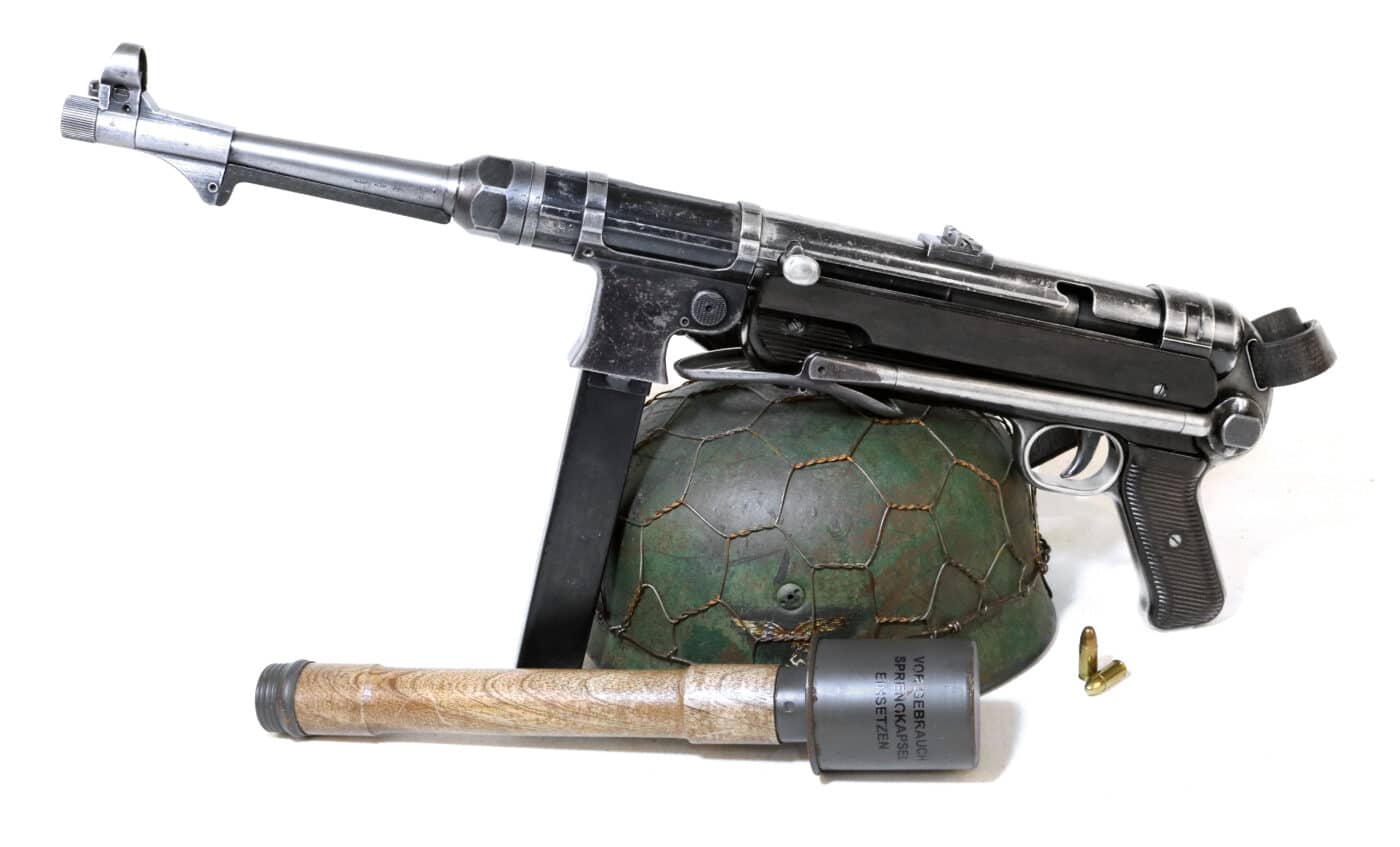
In the interstitial space between World Wars I and II, something insidious happened. Engineers, politicians and industrialists alike had an awakening. Where previously infantry weapons were all forged, milled, sawn and sanded, now it was time for something more institutional. In no place was this axiom better manifest than in the German MP40.
Origin Story
The MP40 was an evolutionary development of the original MP36. This radical weapon did not survive beyond prototype stage, but in it you could see the beginnings of something quite familiar. The subsequent MP38 was built around a machined steel receiver.
The MP38 hit the streets in, you guessed it, 1938. This pistol-caliber submachine gun changed the way grunts managed their battlespace. Where previous weapons were nearly two meters long with their extraordinary sword bayonets and cycled laboriously via a manual bolt action, the full-auto MP38 spit 9mm bullets like a garden hose and maneuvered indoors faster than a toddler on Sugar Babies.
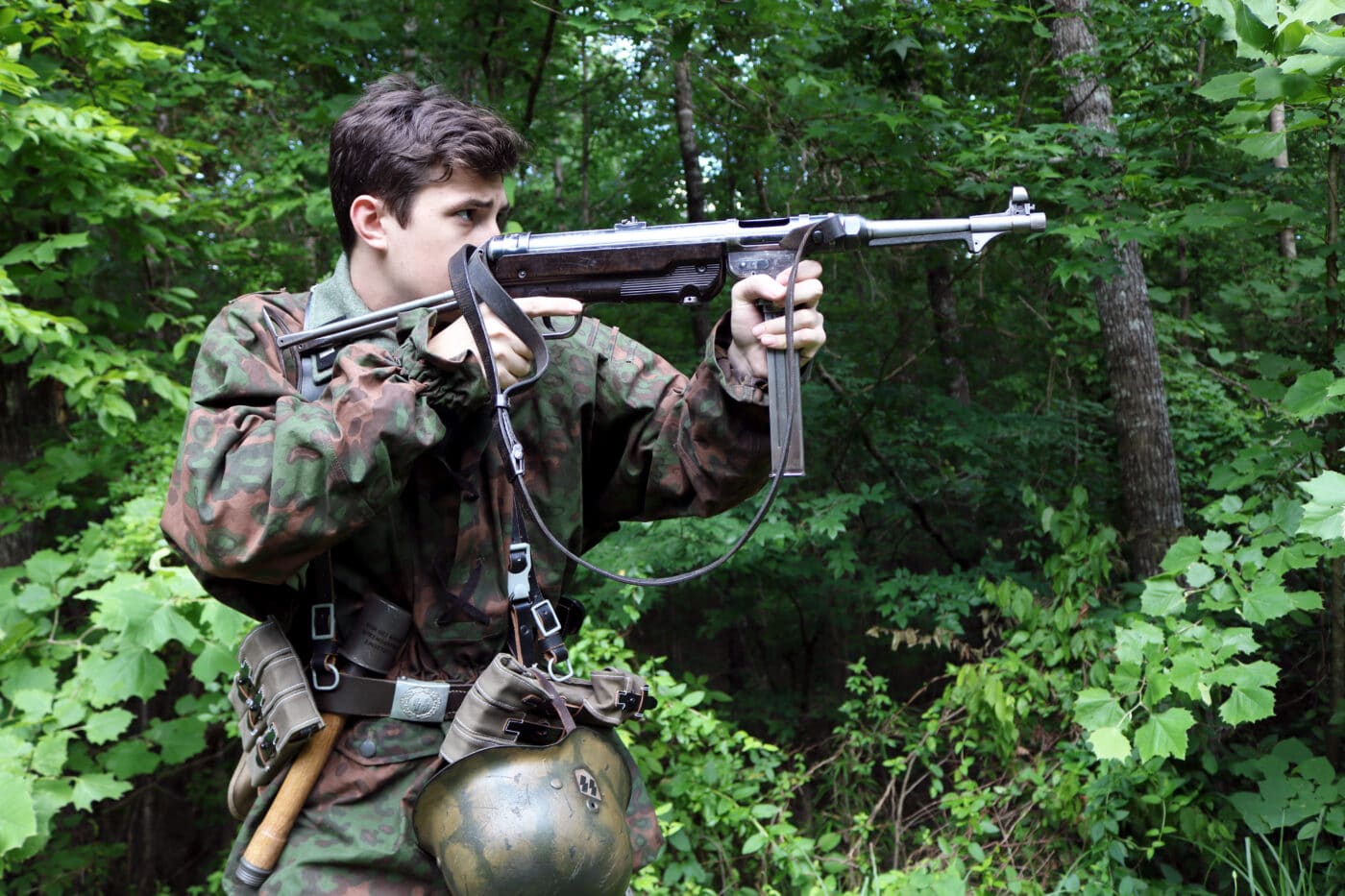
The receiver featured a series of longitudinal grooves along its length, and the magazine well sported a hole in each side about the size of a dime. The subsequent MP40 that would come was a very similar weapon, but the receiver was formed from stamped steel that was easy to produce in large quantities by semi-skilled workers. There were a few other fundamental differences between the MP38 and the MP40, but normal people don’t care. The two guns look about the same in dim light, but the MP40 was markedly easier to manufacture en masse.
The basic weapon feeds from a vertically-mounted 32-round box magazine and features a radical underfolding steel stock. In place of wooden furniture the MP38’s designers used synthetic Bakelite. Bakelite is a polyoxybenzylmethylenglycolanhydride. This remarkable mouthful of chem-speak was the first plastic material made from synthetic components, a thermosetting phenol formaldehyde resin. They made the stuff via a condensation reaction of phenol with formaldehyde. A Belgian-American chemist named Leo Baekeland invented it in 1907 while working in Yonkers, New York.
The point is that for the first time a military weapon was designed to be both tactically efficient and easily manufactured in quantity. Generations of firearms to follow were similarly crafted, but it was really the MP40 that started it all. The specifics were indeed groundbreaking.
Details
Early versions had a fixed reciprocating charging handle on the left. There was a notch cut into the receiver to allow the bolt to be locked to the rear, but otherwise there was no manual safety. It was found that the gun could fire inadvertently if dropped or handled roughly. The solution was to retrofit the weapon with a charging handle that snapped in and out of the bolt. In so doing the bolt could be manually locked in place. Both bolt styles can be found in both MP38’s and MP40’s, though the previous unmodified guns remain quite rare today.
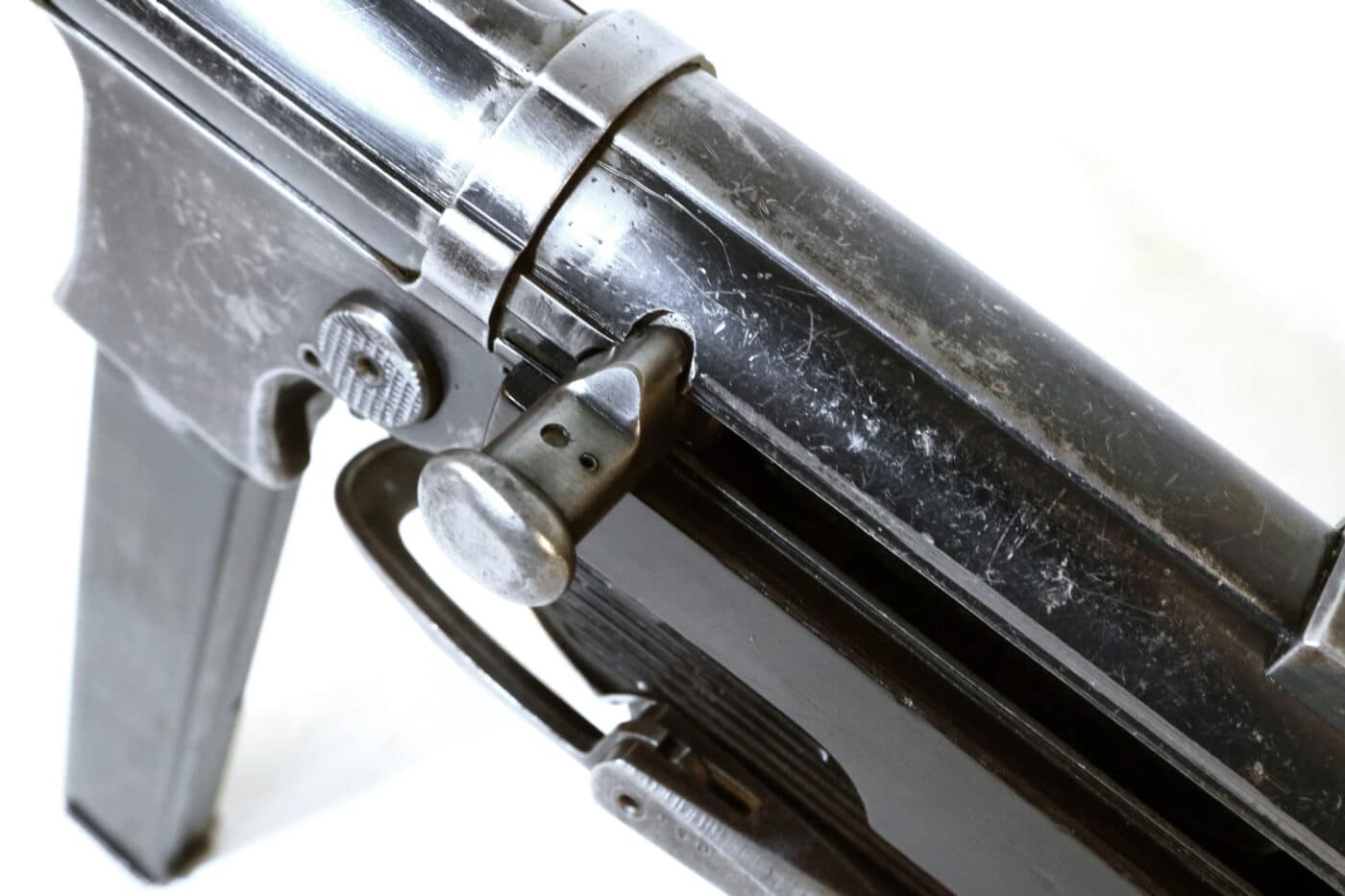
The front sight was hooded, while the rear sight was flip adjustable between 100 and 200 meters. The magazine was a double stack, single feed design that was really the gun’s weak link. It required a separate loader to charge and was not as reliable as it should have been. Most German Landsers in combat loaded their mags to between 28 and 30 rounds for added reliability. The weapon was issued with six magazines and the loader in two 3-cell pouches.
The odd-looking hook device on the bottom of the barrel was made from either Bakelite or aluminum. It was designed such that it could be laid across the edge of a halftrack or similar rest. The bulge at the front would help keep the muzzle from riding back into the fighting compartment under recoil.
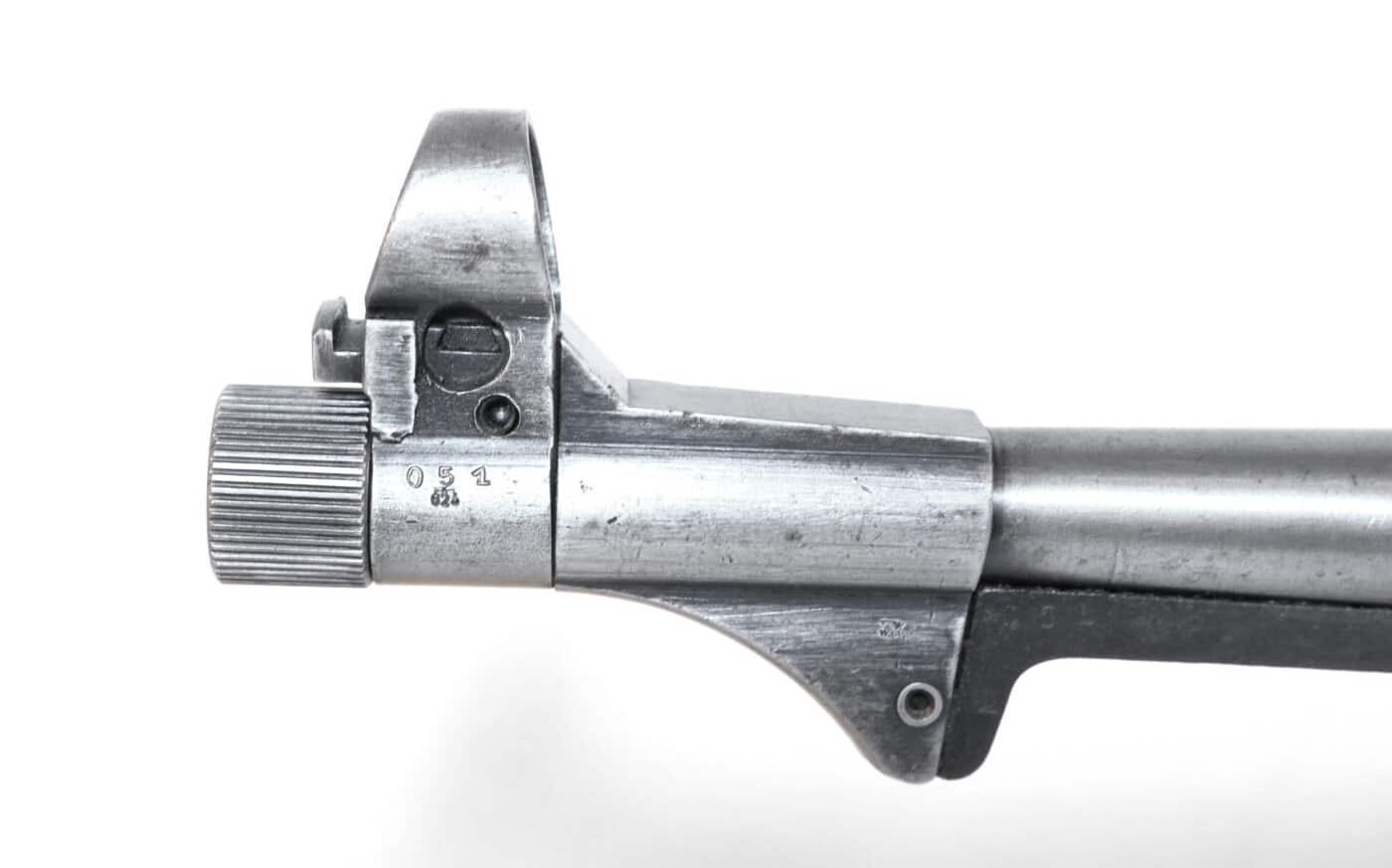
The rear sling attachment point was on the centerline and accommodated mounting the sling on either side. The forward sling point was technically reversible. However, it was intended to be oriented on the right and could not be swapped without a serious wrench. While this made the gun a bit awkward to carry, it arranged the weapon such that the charging handle didn’t eat into your back.
The firing mechanism was full auto only, and the gun fired from the open bolt. As a result, the weapon was fairly simple leaving little to break. So long as minimal care was exercised, the MP38/40 was exceptionally reliable.
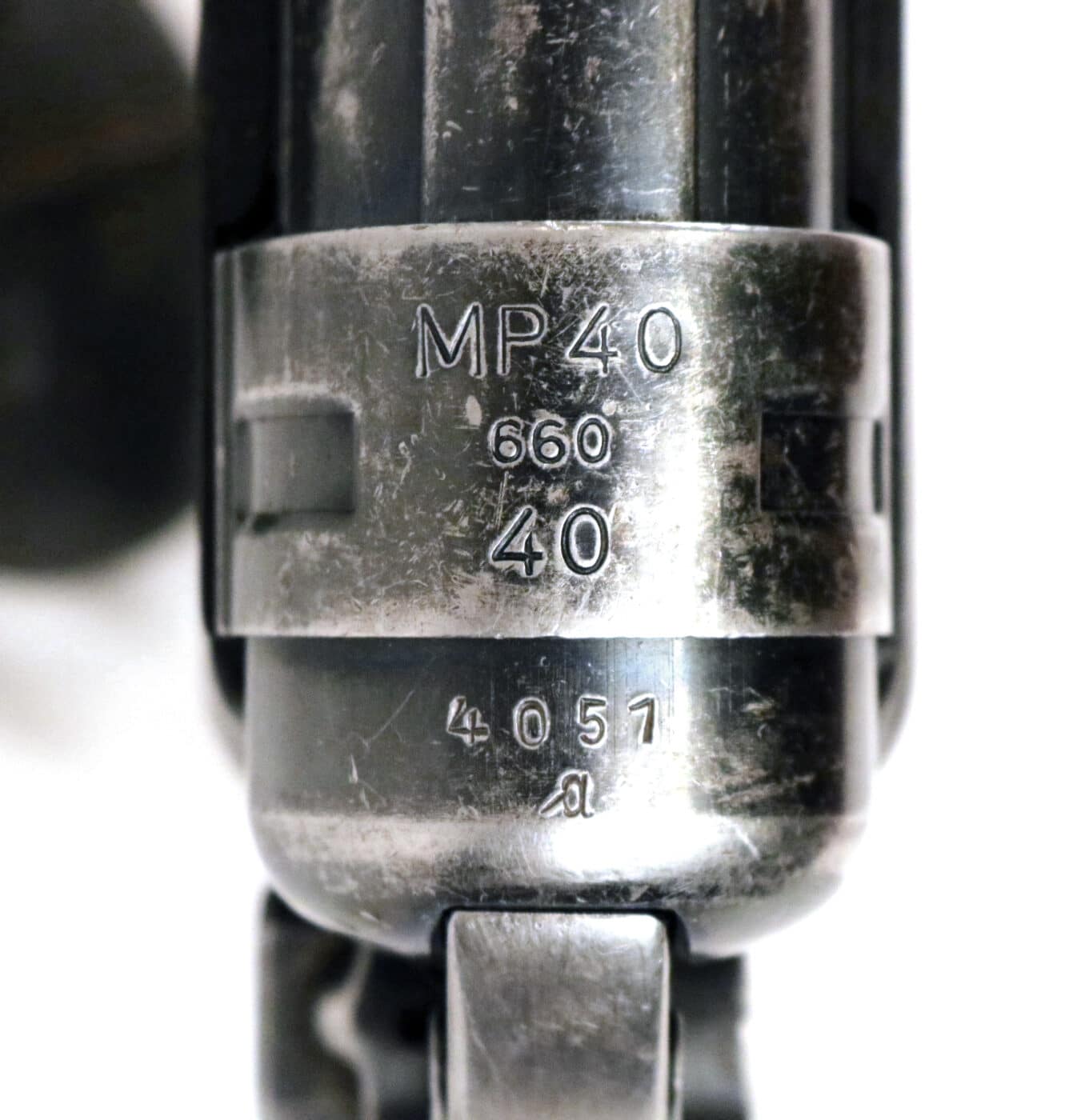
Despite the revolutionary nature of the design, the Germans still found themselves incapable of building something shoddy. While the MP40 minimized machine time and optimized production speed, the Nazis still serialized everything large enough to accept a number and plastered the things with proof marks. Incidentally, while the Germans were busy stamping serial numbers on their firing pins we were pushing out as many as 65,000 M1 Carbines per day. ‘Merica!
Practical Tactical
The MP40 was a bit hefty at nine pounds and cycled at a comatose rate of around 500 rounds per minute. The collapsible stock indeed folded up into quite the compact package by the standards of the day. Over time most MP40 stocks grew a little floppy. In their defense, however, the krauts never imagined that geeks like me would still be farting with these things eight decades after they first rolled off the lines.
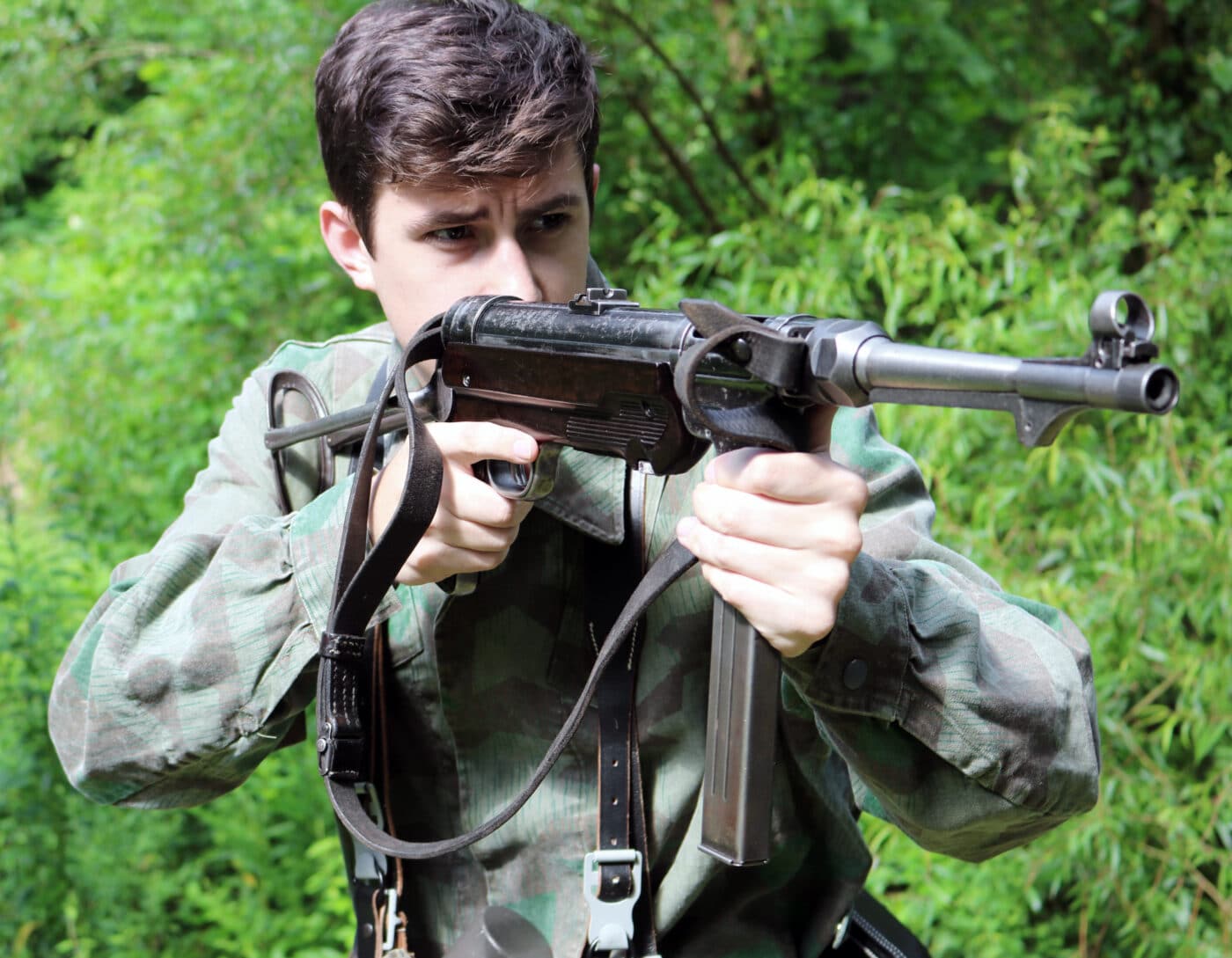
The MP40 is a popular fixture in most all period war movies as well as such classics as the Indiana Jones series. In most cases the gun is handled improperly. While it certainly looks cool to grab the magazine and magazine well with the support hand, training manuals of the day actually directed that you fire the weapon like a rifle with the support hand underneath the Bakelite handguard.
These same training manuals instructed users to utilize the magazine as a monopod when firing the gun from the prone. While the weapon was best controlled from the shoulder, it also ran exceptionally well from the hip. Hip shooting is a lost art nowadays, but it was a real thing back during World War II.
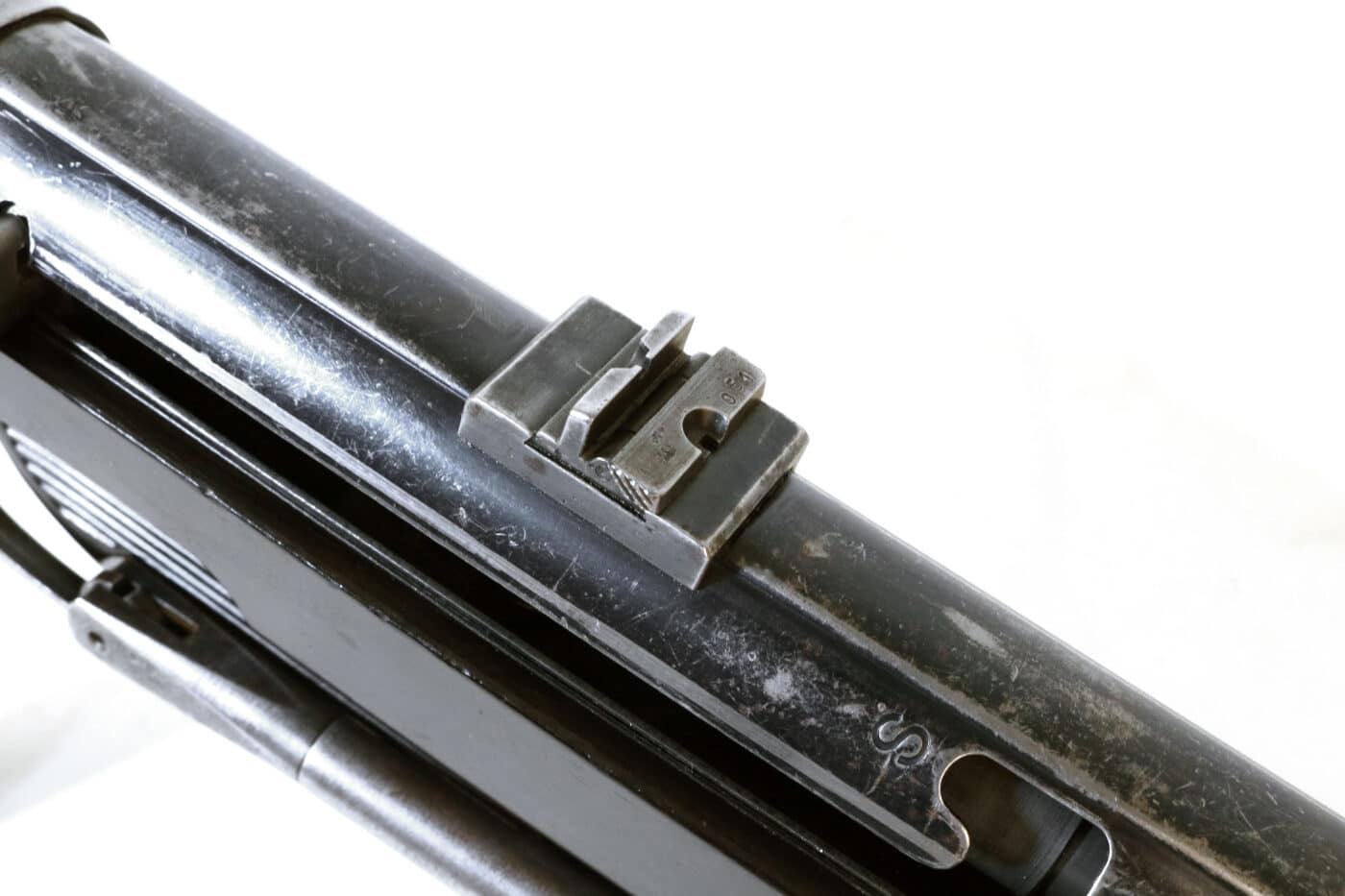
The MP40 is front heavy and cycles quite slowly. Singles and doubles are easy for the experienced trigger finger. The 32-round magazine lasts quite a while, and it is a straightforward task to keep bursts tight with a little trigger time.
Denouement
The MP40 was intended to arm small unit leaders, armored vehicle crewmen and similar troops whose combat roles precluded easy employment of a full-sized rifle. MP40’s also came to be issued in recognition of exceptional combat prowess. Over time the guns were scrounged as they became available. Total production was around a million copies.
Captured MP40’s were prized among Resistance fighters and were frequently used by Allied troops as well. Its 9mm Parabellum chambering allowed the MP40 to be fed with English 9mm ammo. Second only to the Luger pistol, the MP40 was the alpha souvenir. My wife’s grandfather, a veteran of nearly two years’ worth of combat in Europe and one of my favorite people, brought one back on the troopship as he was returning home after the war. Alas, some miscreant stole the gun from underneath his bunk during the voyage across the Atlantic.
Today, a transferable vintage MP40 is the pinnacle of any properly seasoned private machinegun collection. They cost a cast-iron fortune as a result. Privately-owned MP40’s come in two broad categories.
The first is original unmolested WWII veteran bringback guns that were registered with the government during the single thirty-day amnesty back in 1968. These guns cost as much as a decent new car. The second are called “tube guns.” These weapons were built from demilled parts kits remanufactured on newly-built receivers produced and registered prior to the machinegun ban of 1986. Tube guns are not quite so expensive, but none of them are cheap. A tube gun costs about as much as a nice used car.
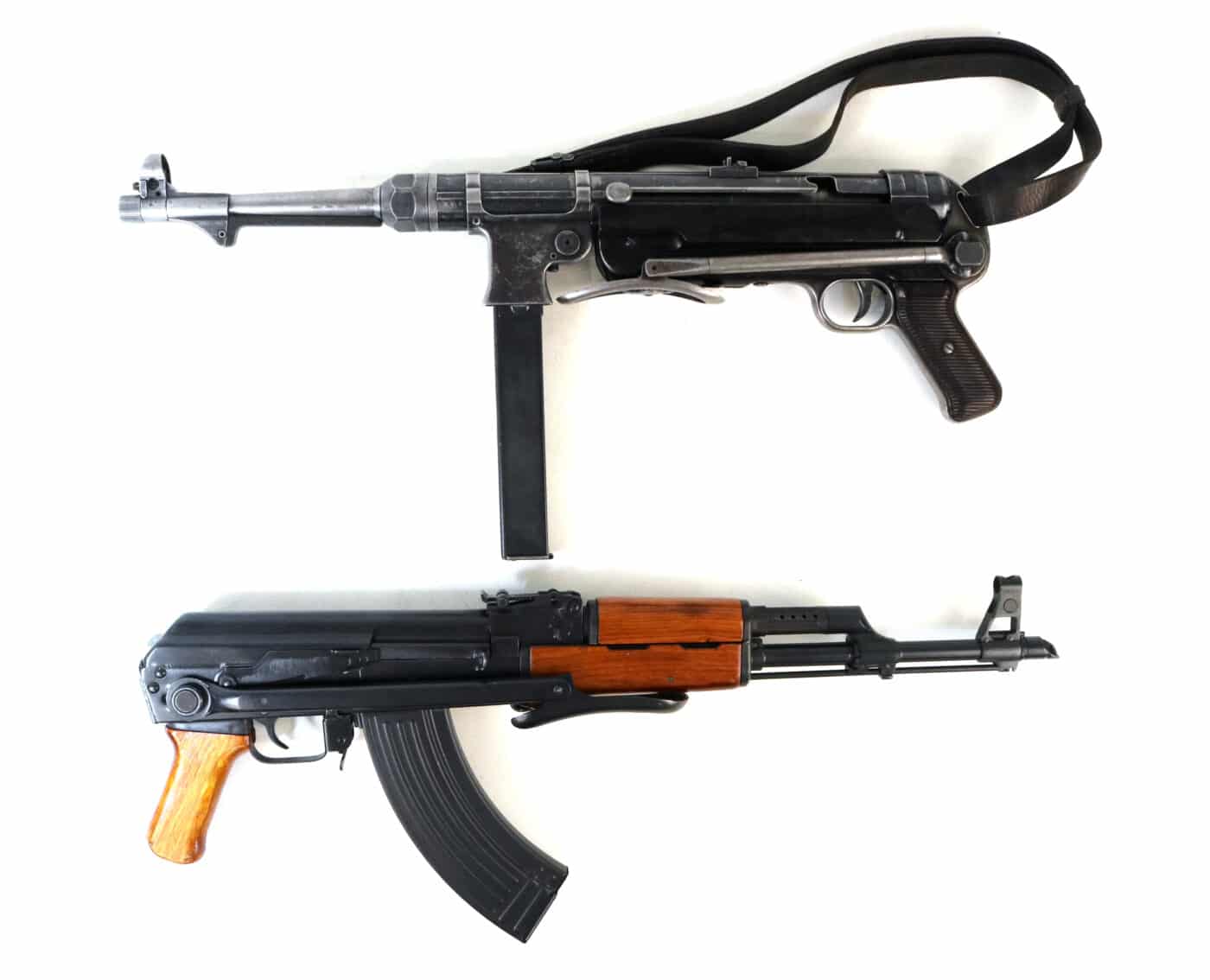
The MP40 embodied a fresh new paradigm in the mass production of military weapons. The manufacturing techniques pioneered in the design went on to inspire the British Sten, the American M3 Grease Gun, and post-war weapons like the HK MP5, the Walther MPL, the Uzi and many more. Despite having been crafted by some of the most depraved monsters in the history of the species, the German MP40 was a truly elegant and inspired combat tool. To heft a vintage example today is to touch a piece of history.
Editor’s Note: Please be sure to check out The Armory Life Forum, where you can comment about our daily articles, as well as just talk guns and gear. Click the “Go To Forum Thread” link below to jump in!
Join the Discussion
Continue Reading
Did you enjoy this article?

 78
78






